| Date | Text | |
|---|---|---|
30 Nov 1994

Ohio State University Radio Observatory |
Ohio State University Radio Observatory (astronomy and space ) The "Big Ear" at the Ohio State University Radio Observatory ends its full-time search for extraterrestrial intelligence radio survey, having run continuously for 22 years, beginning in 1973. |
|
30 Nov 1994

Richard P. Binzel |
Richard P. Binzel (astronomy and space ) Richard P. Binzel devizes the original of what will become the Torino Scale for categorizing the impact hazard associated with near-Earth objects. |
|
30 Nov 1994

brown dwarf |
brown dwarf (astronomy and space ) The first brown dwarf – Teide 1 – is discovered. |
|
30 Nov 1994
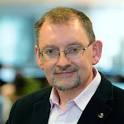
Andy Harter |
Andy Harter (computer science) Andy Harter and colleagues devise Virtual Network Computing. |
|
30 Nov 1994
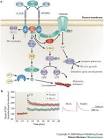
Reelin |
Reelin (neuroscience) The RELN gene and Reelin protein are discovered by Gabriella D'Arcangelo and colleagues, solving the mystery behind the formation of "inverted cortical layers" in the brain of reeler mutant mice, and sparking an avalanche of research into the Reelin's role in neurodevelopment. |
|
30 Nov 1994

M-theory |
M-theory (physics) M-theory is conjectured by Edward Witten. |
|
30 Nov 1994

Elizabeth Loftus |
Elizabeth Loftus (psychology) Elizabeth Loftus describes the "Lost in the mall technique" as a demonstration that confabulations can be created through suggestions to experimental subjects. |
|
30 Nov 1994

Turing Award |
Turing Award (awards) Turing Award – Manuel Blum |
|
30 Nov 1994
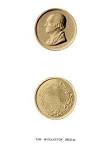
Wollaston Medal for Geology |
Wollaston Medal for Geology (awards) Wollaston Medal for Geology – George P. L. Walker |
|
30 Nov 1994

Panthéon, Paris |
Panthéon, Paris (awards) Enshrinement in the Panthéon, Paris – Pierre and Marie Curie |
|
17 Jan 1995

Prodigy (online service) |
Prodigy (online service) (computer science) Prodigy (online service) offers access to the World Wide Web. |
|
30 Jan 1995

National Institutes of Health |
National Institutes of Health (medicine) Workers from the National Institutes of Health announce the success of clinical trials testing the first preventative treatment for sickle cell anaemia. |
|
30 Jan 1995
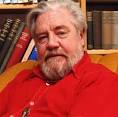
Gerald Durrell |
death Gerald Durrell Gerald Durrell (b. 1925), British wildlife conservationist. |
|
01 Feb 1995

Project Phoenix |
Project Phoenix (astronomy and space ) Project Phoenix begins looking for extraterrestrial transmissions using the Parkes Observatory radio telescope in New South Wales, Australia, the largest telescope in the Southern Hemisphere. |
|
02 Feb 1995
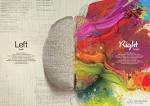
Artistic brain |
Artistic brain In 1995, news of research linking brain structure and artistic talent was released by at a press conference in Washington. Dr Gottfried Schlaug announced the work of his team of researchers at Beth Israel Hospital in Boston, Mass. Persons with perfect pitch were found to have a region in the left hemisphere of the brain, the plenum temporale, to be enlarged. However, it was also necessary that to have perfect pitch, a person must be exposed to music before age 10 years. Failing that, having an enlarged plenum temporale does not of itself normally coincide with having perfect pitch later. |
|
08 Feb 1995
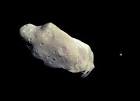
Asteroid |
Asteroid (astronomy and space ) Asteroid 6349 Acapulco is discovered by Masahiro Koishikawa. |
|
14 Mar 1995

William Fowler |
death William Fowler Died 14 Mar 1995 at age 83 (born 9 Aug 1911). William Alfred (Willy) Fowler was an American astrophysicist, who shared the Nobel Prize in Physics in 1983 for “his theoretical and experimental studies of the nuclear reactions of importance in the formation of the chemical elements in the universe.” He spent much of his life measuring the rates nuclear reactions of astrophysical interest, as in the interior of stars. From 1964, Fowler made theoretical calculations relating to supernovae, gravitational collapse, neutrinos, formation of light elements, and nucleocosmochronology. Fowler co-authored a paper, Synthesis of the Elements in Stars, (with Geoffrey and Margaret Burbidge and Fred Hoyle) which demonstrated how cosmic abundances of most nuclides (other than the lightest) could result from nuclear reactions in stars. |
|
22 Mar 1995

Valeri Polyakov |
Valeri Polyakov (astronomy and space ) Cosmonaut Valeri Polyakov returns after setting a record for 438 days in space. |
|
24 Mar 1995

Joseph Needham |
death Joseph Needham Joseph Needham (b. 1900), English biochemist & writer on the history of science and technology in China. |
|
25 Mar 1995
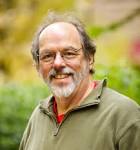
Ward Cunningham |
Ward Cunningham (computer science) Ward Cunningham loads the first wiki software, WikiWikiWeb, in Oregon. |
|
02 Apr 1995

Hannes Alfvén |
death Hannes Alfvén Hannes Alfvén (b. 1908), Swedish astrophysicist. |
|
01 May 1995

Wiles's proof of Fermat's Last Theorem |
Wiles's proof of Fermat's Last Theorem (mathematics) Wiles's proof of Fermat's Last Theorem is published in Annals of Mathematics. |
|
19 May 1995

Robert S. Dietz |
death Robert S. Dietz Died 19 May 1995 at age 80 (born 14 Sep 1914). Robert Sinclair Dietz was an American geophysicist and oceanographer who set forth a theory (1961) of seafloor spreading (a term he coined), in which new crustal material continually upwells from the Earth's depths along the mid-ocean ridges and spreads outward at a rate of several inches per year. While a student Dietz identified the Kentland structure in Indiana as a meteoric impact site. His professors steered him toward marine geology. He became the founder and director of the Sea Floor Studies Section at the Naval Electronics Laboratory (1946-1963). He also achieved prominence by studying meteorite craters, both on Earth and on the moon and arguing that these impact craters were common. He died of a heart attack. |
|
23 May 1995

Java programming language |
Java programming language (computer science) The Java programming language is announced to the world. |
|
08 Jun 1995

Danish |
Danish (computer science) Danish/Greenlandic/Canadian programmer Rasmus Lerdorf releases the first version of the scripting language PHP, which in 15 years will be used as the server-side language on 75% of all Web servers. |
|
23 Jun 1995
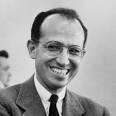
Jonas Salk |
death Jonas Salk Jonas Salk (b. 1914), American medical researcher. |
|
25 Jun 1995

Ernest Walton |
death Ernest Walton Died 25 Jun 1995 at age 91 (born 6 Oct 1903). Ernest Thomas Sinton Walton was an Irish physicist who was corecipient, with Sir John Douglas Cockcroft of England, of the 1951 Nobel Prize for Physics for the development of the first nuclear particle accelerator, known as the Cockcroft-Walton generator. The accelerator was built in a disused room in the Cavendish Laboratory, and supplied with several hundred kilovolts from a voltage multiplier circuit designed and built by Cockroft and Walton. On 14 Apr 1932 Walton turned the proton beam on to a lithium target. Despite all the odds against them, they succeeded in being the first to split the atom, and Walton was the first to see the reaction taking place. They identified the disintegration products as alpha particles (helium nuclei). |
|
13 Jul 1995
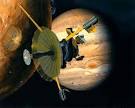
Spacecraft Galileo releases probe |
Spacecraft Galileo releases probe In 1995, the spacecraft Galileo released a probe towards Jupiter was to become the first Earth emissary ever to penetrate the atmosphere of any of the outer gas giants (Dec 1995). The mission's scientific objectives included measurement of the temperature and pressure structure of Jupiter's atmosphere and the chemical composition of Jupiter. Also, it studied the cloud layers and cloud particle size and density. Measurement were made of the amount of helium relative to hydrogen on Jupiter, winds in the atmosphere, how sunlight and energy coming from the deep interior are distributed in Jupiter's atmosphere. The probe could also detect lightning and energetic protons and electrons trapped in Jupiter's magnetic field. |
|
16 Jul 1995

Amazon.com |
Amazon.com (computer science) Amazon.com, incorporated a year earlier by Jeff Bezos in Washington (state) as an online bookstore, sells its first book, Douglas Hofstadter's Fluid Concepts and Creative Analogies: Computer Models of the Fundamental Mechanisms of Thought. |
|
11 Aug 1995

Alonzo Church |
death Alonzo Church Alonzo Church (b. 1903), American mathematician. |
|
13 Sep 1995

A. E. Wilder-Smith |
death A. E. Wilder-Smith A. E. Wilder-Smith (b. 1915), British organic chemist. |
|
06 Oct 1995
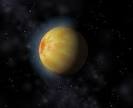
51 Pegasi b |
51 Pegasi b (astronomy and space ) 51 Pegasi b: Michel Mayor and Didier Queloz of the University of Geneva at the Observatoire de Haute-Provence announce in Nature the first definitive detection of an extrasolar planet orbiting an ordinary main sequence star (51 Pegasi). |
|
11 Oct 1995
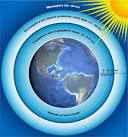
Ozone layer |
Ozone layer In 1995, Americans Mario Molina and Sherwood Rowland, and Dutch scientist Paul Crutzen won the Nobel Prize in chemistry for their work warning that CFCs are eating away Earth's ozone layer. In 1970, Dr. Crutzen showed that nitrogen oxides are important in the natural balance of ozone in the upper atmosphere. Thus research rapidly escalated into global biogeochemical cycles. In 1974, Drs. Molina and Rowland established that there was a threat to the ozone layer from man-made chlorofluorocarbons (CFCs), such as gases then used in spray cans. More than a decade before the Antarctic ozone hole was discovered, their research stirred the international response to control the emissions of CFCs to protect the ozone layer. |
|
05 Dec 1995

Clair Cameron Patterson |
death Clair Cameron Patterson Died 5 Dec 1995 at age 73 (born 2 Jun 1922). U.S. geochemist who in 1953 made the first precise measurement of the Earth's age, 4.55 billion years. He pioneered in three major areas of geochemical research. (1) He provided the first reliable ages of the earth and meteorites (1962), using analysis of the isotopic compositions and concentrations of lead in terrestrial materials and meteorites. This has been a benchmark for researchers. (2) He established the patterns of isotopic evolution of lead on earth, by analysis of critical rocks, sediments and waters of the planet. Thus he created a powerful tool for identifying, tracing and evaluating the nature of the major geochemical reservoirs in the crust, mantle, and oceans. (3) He studied environmental lead pollution. |
|
05 Dec 1995

Stanley Keith Runcorn |
death Stanley Keith Runcorn Died 5 Dec 1995 at age 73 (born 19 Nov 1922). British geophysicist Southport, Lancashire, who was the first to discover evidence of the periodic polar reversals of the Earth's magnetic field. In the 1950s he was a pioneer in the fledgling discipline of paleomagnetism, or remanent magnetism, the study of the residual magnetism. He also made substantial contributions to various fields, including convection in the Earth and Moon, the shape and magnetic fields of the Moon and planets, magnetohydrodynamics of the Earth's core, earth currents, changes in the length of the day and polar wandering, continental drift and plate tectonics. He was murdered, aged 73, when he disturbed a thief in his motel room in San Diego, while on a US lecture tour. |